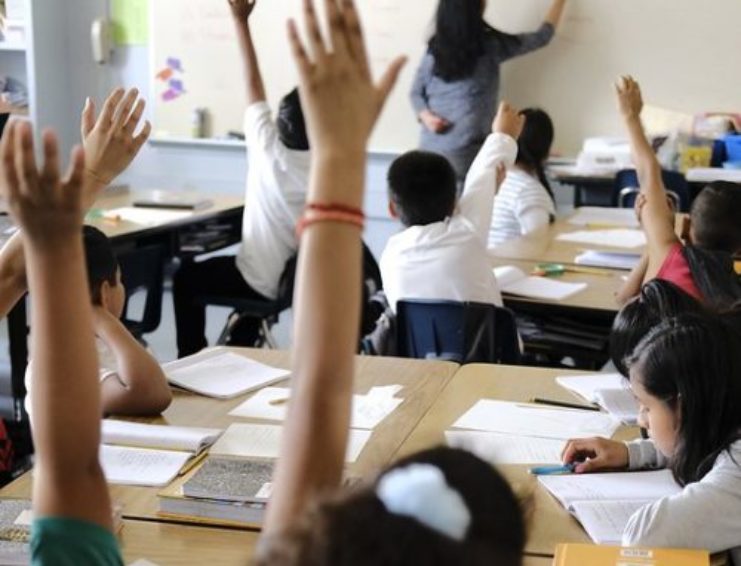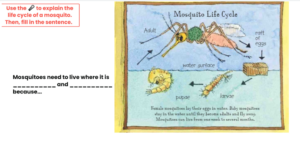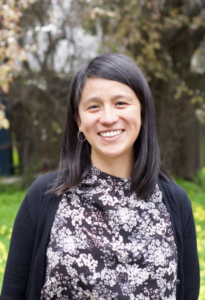
Students Deserve a Say in their Education: What Distance Learning Reminded Me About Engagement and “Re-Engagement”
After over a year of distance learning my students and I were feeling burned out. We were in the last stretch of the year, spring 2021. There was just enough time to start another literacy unit, but it would be riddled with interruptions like district-wide testing, minimum days for student conferences, and three-day weekends. I needed a powerful way to end the year.
That’s when I thought back to a conversation I had had with one of my colleagues during our Lead by Learning session small group Public Learning breakouts conversations. My colleague’s focal students had completely disengaged as the year in distance learning wore on, and he was working through getting them to come to class and engage. Together, we supported this colleague’s thinking, and now just a few weeks later, I found myself in the same spot with my third graders. I thought back to his learning. Through the Public Learning protocol, we had thought through the term “re-engagement” and the need to give a purpose to students’ learning, particularly a social purpose.
That gave me the idea to turn to the students to see what they wanted to do with the rest of their school year. I gave them three options: we could continue with our fairy tale unit, we could dive into poetry, or we could “do something science-y.” Through a Zoom poll, the students overwhelmingly voted to do “something science-y”!
Once that was decided, I thought about what standards I still needed to cover. Students still needed practice finding the main idea of an informational text, we still needed to cover some of their language standards, and we had not done much physical science.
The next day, I asked the kids what they were curious about. From there, the students created a flash brainstorm as a class, listening to others’ ideas and contributing their own. The chat was on so that other students could contribute in that way if they were daunted to speak on Zoom in front of the whole class. I asked, “Make a list of all of the questions that you have. The only rule is that we must be able to explore your question through science.” I didn’t want any questions like “What are you going to give your mom for Mother’s Day?” or “What is your favorite animal?” but everything else was fair game, and the students delivered!
How are seeds made?
Do mosquitoes explode if they drink too much blood?
Why is the Earth round when the floor looks flat?
No questions were rejected, though I did quietly select a few that would make better learning experiences for the whole class.
After our list was made, we sorted the questions into three main categories that roughly correspond to life science, earth science, and physical science: “Living Things” “The Earth” and “Technology and the world.” For the rest of the school year, we would take on one of the categories.
The first question we attempted to answer was, “Do mosquitoes explode if they drink too much blood?”
 By exploring that question, we learned about a mosquito’s life cycle, which led students to make a connection to the life cycle of the mealworms that we had been observing just before school shut down last spring. We also learned that a mosquito will only explode if a scientist severs the nerve that connects its stomach to its brain…and we watched some really gross videos to prove it!
By exploring that question, we learned about a mosquito’s life cycle, which led students to make a connection to the life cycle of the mealworms that we had been observing just before school shut down last spring. We also learned that a mosquito will only explode if a scientist severs the nerve that connects its stomach to its brain…and we watched some really gross videos to prove it!
From there, we created paper flowers to model pollination, we made and flew paper airplanes, and we discussed how it can be possible for the Earth to be round. I realized kids need a reason to show up, and what better reason than to meet their self-professed needs and answer their deep probing questions.
I am unsure if students retained what they needed. Not all students were magically engaged, nor did we have perfect attendance overnight. However, we did engage with new resources like art tutorials on YouTube, high quality science videos, and informational texts in all different forms. We even did a close reading of an exterminator’s website!
What I can also say with confidence is that at least once per day for the final days of the 2020-21 school year, one student or another would ask to add to our original list of questions. And whenever they contributed to our list I would hear a chorus of their classmates saying, “That’s a good one!”
Now this school year, 2021-22, I welcomed students into a classroom that looked woefully “unprepared.” The walls were blank. The bulletin boards were empty. The library was tidy, but unlabeled. Through our “re-engagement” distance learning science unit, I learned that students deserve a say in their education . They deserve the chance to design their own learning experiences. Only then will they have a reason to come to school. I wonder what questions students will generate for years to come to fill our lessons, units, and blank walls?
 Youali Ramirez is an educator in the West Contra Costa School District. Youali has taught elementary school for five years, and loves learning and laughing alongside her students every day. When she is not hunting for the next great read-aloud or science investigation for her second graders, she enjoys cooking, listening to audiobooks and podcasts, and caring for her houseplants.
Youali Ramirez is an educator in the West Contra Costa School District. Youali has taught elementary school for five years, and loves learning and laughing alongside her students every day. When she is not hunting for the next great read-aloud or science investigation for her second graders, she enjoys cooking, listening to audiobooks and podcasts, and caring for her houseplants.
